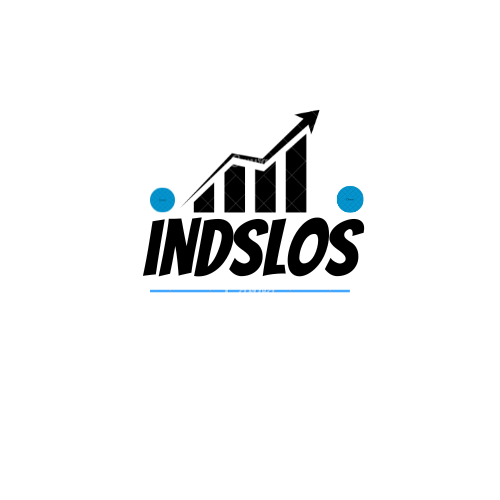Enthusiasm about generative AI keeps, with maximum organizations planning to combine it into their offerings
Generative AI (gen AI) holds significant promise for accelerating innovation in coverage as companies integrate mountains of data and superior computing energy so one can transform human beings’s interactions with their coverage vendors and improve monetary outcomes. Usual, coverage leaders see gen AI as a transformative possibility for
The industry inside the long time, probable requiring new partnership models regarding insurtechs, traditional vendors, and massive technology corporations.
However, gen AI is still within the early tiers, and the ability enterprise affects (advantageous and negative) remain uncertain for many insurtechs.
No strangers to assessing chance, insurtechs and conventional coverage companies are proactively addressing concerns about compliance and accuracy whilst enforcing gen AI.
Moreover, businesses are running to make certain that output created by algorithms is held to the equal ethical requirements as human-created work.
Meanwhile, the industry is striving to determine out the maximum feasible and impactful approaches to use the generation. Thus far, coverage businesses are the usage of gen AI for fraud detection;
growing copilots for faster employee onboarding in claims, underwriting, and customer support; and presenting the method for workers to extract insights from massive repositories of facts through intuitive interfaces.

One main challenge of adopting gen AI is schooling workforce, because the use of the technology typically nevertheless calls for human involvement. Agencies also are weighing which gen AI equipment to construct in-house and which to get from technology carriers.
Within the close to term, insurtechs will possibly take the lead in helping insurers observe this technology, but insurers are taking a long-time period view on potentially developing certain competencies in-residence.
- Groups are renewing their attention on profitability and solving the enterprise’s core challenges
Greater insurtechs nowadays are centered on participating with and supporting conventional coverage vendors—a shift from years past, when it was greater usual for insurtechs to challenge incumbents within the insurance and tech industries.
This fashion is propelled by using pervasive profitability challenges. Indeed, the various conversations at ITC 2023 touched on the enterprise’s shift from a focus on boom to a focal point on profitability,
constructing on a fashion we mentioned remaining yr at ITC 2022. The modern monetary surroundings has presented challenges to profitability as companies navigate complexities in managing losses and maintaining a lid on fees amid excessive inflation. ‘
Other consequences at the enterprise’s price range come from the increasing frequency and severity of catastrophic events, social inflation brought on with the aid of rising litigation charges and different elements, and the increasing value of home and automobile repairs.
We see a trend of agencies striving to remedy the essential challenges facing the insurance enterprise. Many insurtechs are that specialize in the following efforts:
Dealing with claims prices. Myriad solutions are actually to be had to assist insurers are expecting and save you losses; examples include using telematics to accumulate data approximately a driver’s mileage and conduct, and the chance scoring of property, people, and drivers. In phrases of managing the claims method, insurers can use aerial imagery to estimate losses at a low value and decrease the time claims adjusters spend assessing claims in man or woman.
Improving underwriting and pricing. In parallel, there has been an extended awareness on loss ratio control, which include improvement of threat selection, pricing, and underwriting, given terrible overall performance in the assets and casualty enterprise because of inflation, higher losses from catastrophic occasions, and different factors.
This trend includes equipment for enhancing the accuracy and efficiency of generalized linear fashions and hastily incorporating new statistics, including records from aerial imagery, into hazard choice.
Serving across functions. More and more, insurtechs targeted on claims and people centered on underwriting are trading locations, entering each other’s location of specialty and increasing their relevance.
As an instance, claims information and analytics companies are supporting insurance providers enhance loss charges via stepped forward underwriting competencies.
Three. Insurance is evolving, with continued momentum for emerging dangers and modifications in reinsurance
Risks are growing more complicated because of elements together with technological advances, climate exchange, geopolitical tensions, and the growing older of the arena’s population. Those macrodevelopments are shaping the future dangers for the industry to manipulate.
ITC participants discussed the subsequent traits related to rising and evolving dangers:
Traction for cyber insurance. We continue to look the rise of dealing with general agents and managing trendy underwriters, driven through the rising frequency and severity of cyberattacks.
Insurance for gen AI. Demand is rising for coverage concerning gen AI and advanced computing. These products are meant to offer coverage for unintended results bobbing up from gen AI—for instance, protection dangers that would be created if a version offers imprecise or deceptive instructions to production employees.
Changes in reinsurance. Inside the persevered tough marketplace cycle, wherein expenses are improved and insurers have a narrowed underwriting urge for food, reinsurers are implementing better retentions for number one providers to control the frequency of belongings losses.
Reinsurers are targeted on bringing comparable changes in casualty strains in response to social inflation from larger agreement amounts and an more and more litigious surroundings.
- Agencies are aiming to reduce tech debt to facilitate the adoption of advanced technology
The enterprise goes lower back to fundamentals on generation choices. Companies are trying to toughen their foundational facts and technology infrastructure, with a focus on measuring and decreasing generation debt, which has gathered unexpectedly during the last decade or so.
Fixing primary generation and information infrastructure challenges have become less of a priority in years beyond, while companies felt pressure to power increase and reduce operational fees. These days, the elevated tempo of technology such as gen AI has compelled corporations to revisit their foundational structures and take motion to reduce technology debt to be able to loose up funding for brand new tech gear.
Insurers with old structures may locate it hard to unlock value from recent generation improvements. Many conventional life insurance companies are nonetheless running to modernize their legacy structures and make development on transferring to the cloud, for example.
Moreover, the traces between commercial enterprise and generation capabilities are blurring. Technologists want to recognize the essential economic challenges facing the enterprise from trends such as loss ratio pressures.
On the same time, business leaders must growth their technical acumen so that you can broaden insights into using tech abilities together with gen AI to address their largest challenges. Collaboration among business and generation leaders turns into increasingly important to insurers’ efforts to create cost for customers and buyers.









Leave a Reply